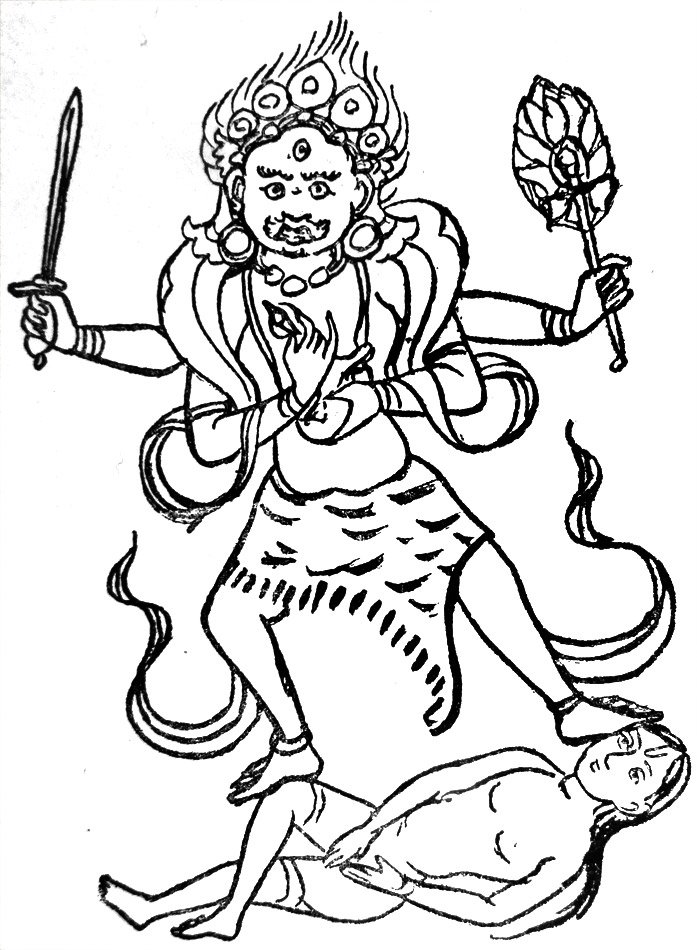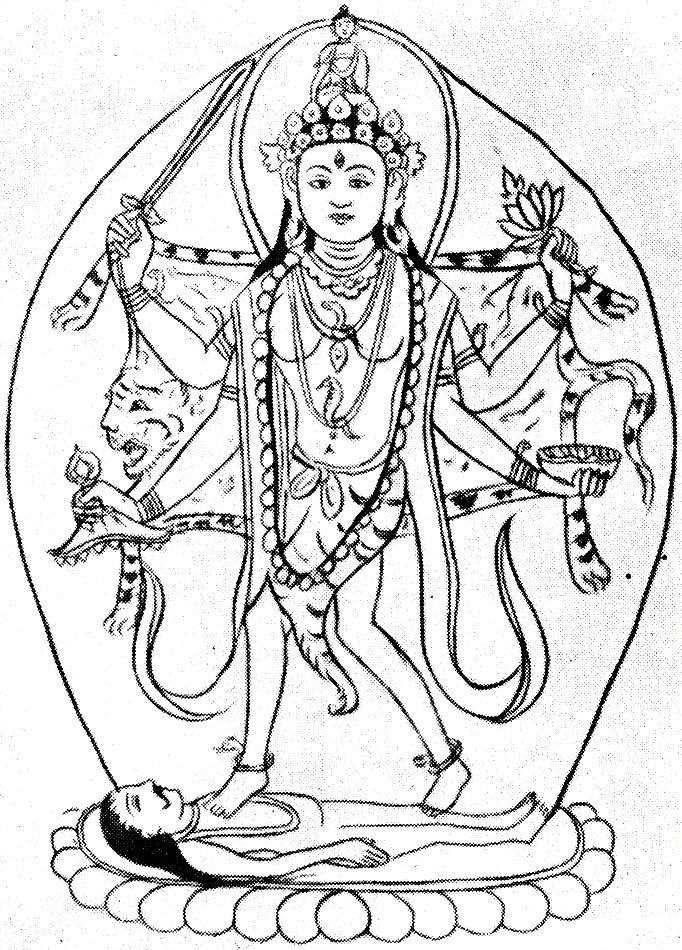The Indian Buddhist Iconography
by Benoytosh Bhattachacharyya | 1958 | 51,392 words | ISBN-10: 8173053138 | ISBN-13: 9788173053139
This page contains an iconography image of Emanations of Akshobhya: Mahacina Tara (Ugratara) and represents figure 135-136 of the book Indian Buddhist Iconography, based on extracts of the Sadhanamala English translation. These plates and illustrations represent either photographs of sculptures or line-drawing reproductions of paintings or other representations of Buddhist artwork.
Figure 135-136 - Emanations of Akṣobhya: Mahācīna Tārā (Ugratārā)
 Figure 135: Mahācīna Tārā |
 Figure 136: Mahācīna Tārā |
Two Sādhanas are devoted to the worship of Mahācīna or Tārā of Mahācīna (Great China) and two Dhyānas, one in prose and the other in verse describe one and the same form of the goddess. She is also known in Buddhist Tantric literature as Ugratārā, and the Vajrayogini temple at Śāṅku in Nepal, contains in the sanctum a figure of Ugratārā. This Ugratārā or Mahācīnatārā of the Buddhists has been incorporated in the Hindu pantheon under the name of Tārā, and is now regarded as one of the ten Mahāvidyā goddesses.
According to the colophon, the Sādhana for Mahācīnatārā has been restored from the Mahācīna-Tantra, which should therefore be earlier than the earliest extant manuscript of the Sādhanamālā. As the Sādhana in verse is attributed to Śāśvatavajra it is certain that the Dhyāna, just quoted, was not in existence before Śāśvatavajra. Now, in the Tārārahasya of Brahmānanda, who flourished in the middle of the 16th century and in the Tantrasāra of Kṛṣṇānanda Āgamavāgīśa an almost identical Dhyāna is stated describing a goddess of the name of Tārā.
A comparison of the two Dhyānas will at once reveal how the original composition of Śāśvatavajra has been modified in the Tantrasāra by a Hindu Tāntric author. Some lines have been added to the original Dhyāna and all grammatical errors are rectified. This is evidently the recognized method of Hinduizing a Buddhist Tāntric deity.
It is remarkable that the Hindus retained in their Dhyāna the effigy of Akṣobhya bespeaking as it does, the Buddhist origin of the goddess, for it is well known that the Hindu gods or goddesses are not in the habit of wearing a miniature figure of their sires on the crown. Moreover, Akṣobhya is unknown in the Hindu pantheon except when he is borrowed from the Buddhists, and the Hindus fail to explain the desirability of putting his figure on the crown of Tārā.
Figs. 135, 136 illustrate the Buddhist form of Tara or Mahācīnatārā, and shows in what different forms she is represented in Nepal in modern times. It may be pointed out that the corpse under the feet of the Hindu Tārā is not a corpse properly speaking, but it is the prostrate form of Mahādeva to whom she is attached as a Śakti.
Āsana: pratyālīḍha;
Appearance: terrible;
Vāhana: corpse;
Arms: four;
